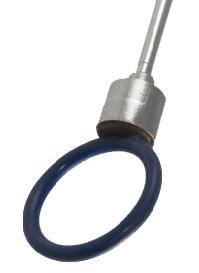Food Safety Modernization Act (FSMA) and Sealing
Every year, approximately 1 in 6 people in the U.S. get sick (~48 million people), 100,000+ are hospitalized, and 3,000 die from foodborne illnesses or diseases, according to data from the CDC. Though this is largely a preventable problem, it still poses a significant public health burden.
The FDA Food Safety Modernization Act (FSMA), enacted by Congress in 2011, is "transforming the nation’s food safety system by shifting the focus from responding to foodborne illness to preventing it."
Although one might think the relevancy of the FSMA is more geared towards the food or beverage product itself, this act is actually vital to the processing operations in food, beverage, and pharmaceutical industry.
Over time, exposure to continuous vibration, volatile temperatures, and corrosive chemicals can cause O-rings in processing operations to become worn and eventually fail. When this occurs, particles of rubber from seals and gaskets can shear-off and migrate through sanitary systems, piping mechanisms, or by other means, eventually entering the product stream.
See more about o-ring failure modes in our video below.

In some cases when a problem is discovered, equipment must be shut down and visual inspections conducted to find the source of contamination. This leads to downtime, lost production, and lost revenue. If the contaminant ends up in the supply chain, even more risk is assumed due to recalls or litigation.
Enter the metal detectable O-ring.
A new breed of O-rings and gaskets is catching on quickly because of the regulations set forth by FSMA. With modern x-ray and metal detection systems systems available, these help in providing confidence to the food, beverage, and pharmaceutical industries. Due to its straightforward approach, metal detection systems can ensure both product and package integrity through identifying contaminants, scanning for missing or broken products, detecting packing voids, and more.
"Typical" O-rings are made entirely of elastomeric materials such as natural rubber, Viton, Nitrile, Silicone, etc.

Metal detectable O-rings are blended with special metallic fillers and additives that allow for identification by in-line metal detectors and X-ray machines.
The result? This allows for small fragments to be removed, either manually or by magnetic separators, helping to ensure product safety and compliance with FDA FSMA regulations. Many products can be X-ray detected in use with packaging and products using glass, stone, high-density plastics, and even some metal or foil packaging.
Metal detectable O-rings are available in a variety of materials, including: fluoroelastomer, EPDM, FKM, Viton, nitrile rubber, silicone, and others. These O-rings are designed for use in standard OEM equipment and have similar tolerance levels for stress, temperatures, and chemicals.
Popular suppliers like Rubber Fab, Garlock, and Dichtomak have already entered the metal detectable space. With an increase in its application use and success, look for more players to enter the market with quality products in the coming years.
For more information on metal detectable rubber, contact Gallagher today. Phone: (800) 822-4063
